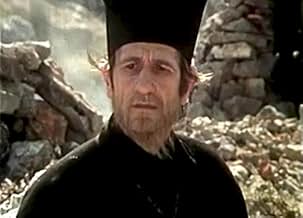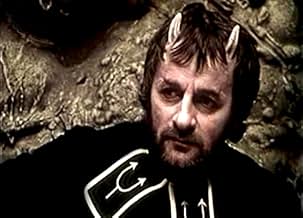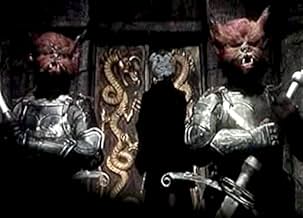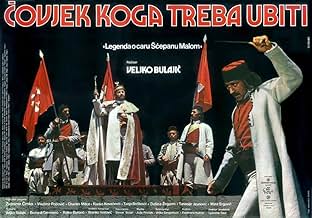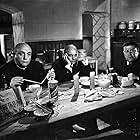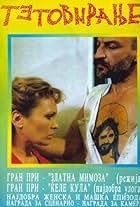The plot shows how Šćepan the Little takes over power in Montenegro, but turns away from Satan and begins to rule in the interests of the Montenegrin people, causing the enmity of not only S... Read allThe plot shows how Šćepan the Little takes over power in Montenegro, but turns away from Satan and begins to rule in the interests of the Montenegrin people, causing the enmity of not only Satan, but also the earthly superpowers.The plot shows how Šćepan the Little takes over power in Montenegro, but turns away from Satan and begins to rule in the interests of the Montenegrin people, causing the enmity of not only Satan, but also the earthly superpowers.
- Awards
- 4 wins
Zuzana Kocúriková
- Zefira, bludnica
- (as Suzana Kocurikova)
Nada Gacesic-Livakovic
- Epilepticarka
- (as Nada Gacesic)
Storyline
Did you know
- TriviaThe film is based on the real character of the self-proclaimed emperor Scepan the Little. In real life Scepan the Little knew German, Italian, French, Russian and Hebrew in addition to his native Serbian language.
- Quotes
Agent prvog reda: Don't you piss against the wind!
Featured review
It's rare that such a film got made in former Yugoslavia, a combination of history/horror/fantasy. I have expected art film or at the very least something similar to Zulawski's Diabel. But this was more local in nature, cause it leans on the story of False Tzar, Stephen the Small - a peculiar historical figure in the 18th century Montenegro.
The power struggle is on between Hell/Satan and God's earthly representatives, the Church.
Russian Emperor Peter the 3rd has been assassinated by the hands of his wife, empress Catherine, a coup has happened. This does not make Devil happy as this sudden change of events questions their power and makes church stronger. Something needs to be done, so one of Hell's lower officers, Farfa, tzar Peter's doppelganger is chosen and sent to Montenegro to pose as (un)dead Russian tzar and hopefully when the time comes - after having been accepted by friendly people of Montenegro - comes back to Russia and reclaims the throne.
I have to admit, this sounds a bit messy and not very logical a plan but it works, Farfa - now called Scepan (Stephen) is welcomed by the people of Montenegro, cause late (now resurrected) tzar Peter has been this small country's friend and protector in the past, but church representatives are less than happy to have this shady figure around. He's growing more popular while church's influence weakens.
So they plan to have him removed with the help of Russia. But other forces such as Turks are also interested to have the impostor killed - but that's not the half of it...Now that political climate has changed in Hell's favor, Satan wants Farfa back, so this guy have some of the most powerful figures on and below Earth after his head.
One of the most interesting aspect of 'Covjek Koga Treba Ubiti' is the unhinged and imaginative portrayal of Hell, its hierarchy and disciples. The masks, scenes of torture, Satan's chambers and so on are indeed very bold for such a country and such a cinematography - vastly conservative at the time. And pulled of rather nicely. Cinematography is pretty good. Some may think that the critical and anti-church sentiment that is apparent here may have been shocking, but apart from daring nudity and some sexuality which I suspect was not quite approved, anticlericalism in Yugoslavia as communist country was very much a natural state of affairs. In addition, director became famous at the time by his war films, portraying brave partisans battling Germans during WW2.
Here, he takes a more fictional approach, depicting the struggle between ultimate good/evil, but in his version, church and priests are even more corrupt than Hell's representative, so Farfa (a former devil's disciple, now people's favorite ruler) is much better person than people of the church. So in short, he may have been saying there's only lesser evil to choose, cause there are no good guys here.
But back to The Man to Kill, after having been denounced and ridden of his powers he tries to get back to normal life, as a man and not supernatural being. He has tricked the Satan, the church, the Turks, everyone, but hopes they'll leave him alone to enjoy the new position and new found love with the local girl, Elfa. But alas, Satan is not one to double cross.
The power struggle is on between Hell/Satan and God's earthly representatives, the Church.
Russian Emperor Peter the 3rd has been assassinated by the hands of his wife, empress Catherine, a coup has happened. This does not make Devil happy as this sudden change of events questions their power and makes church stronger. Something needs to be done, so one of Hell's lower officers, Farfa, tzar Peter's doppelganger is chosen and sent to Montenegro to pose as (un)dead Russian tzar and hopefully when the time comes - after having been accepted by friendly people of Montenegro - comes back to Russia and reclaims the throne.
I have to admit, this sounds a bit messy and not very logical a plan but it works, Farfa - now called Scepan (Stephen) is welcomed by the people of Montenegro, cause late (now resurrected) tzar Peter has been this small country's friend and protector in the past, but church representatives are less than happy to have this shady figure around. He's growing more popular while church's influence weakens.
So they plan to have him removed with the help of Russia. But other forces such as Turks are also interested to have the impostor killed - but that's not the half of it...Now that political climate has changed in Hell's favor, Satan wants Farfa back, so this guy have some of the most powerful figures on and below Earth after his head.
One of the most interesting aspect of 'Covjek Koga Treba Ubiti' is the unhinged and imaginative portrayal of Hell, its hierarchy and disciples. The masks, scenes of torture, Satan's chambers and so on are indeed very bold for such a country and such a cinematography - vastly conservative at the time. And pulled of rather nicely. Cinematography is pretty good. Some may think that the critical and anti-church sentiment that is apparent here may have been shocking, but apart from daring nudity and some sexuality which I suspect was not quite approved, anticlericalism in Yugoslavia as communist country was very much a natural state of affairs. In addition, director became famous at the time by his war films, portraying brave partisans battling Germans during WW2.
Here, he takes a more fictional approach, depicting the struggle between ultimate good/evil, but in his version, church and priests are even more corrupt than Hell's representative, so Farfa (a former devil's disciple, now people's favorite ruler) is much better person than people of the church. So in short, he may have been saying there's only lesser evil to choose, cause there are no good guys here.
But back to The Man to Kill, after having been denounced and ridden of his powers he tries to get back to normal life, as a man and not supernatural being. He has tricked the Satan, the church, the Turks, everyone, but hopes they'll leave him alone to enjoy the new position and new found love with the local girl, Elfa. But alas, Satan is not one to double cross.
- Shadowplayed
- Oct 14, 2015
- Permalink
Details
- Runtime1 hour 45 minutes
- Sound mix
Contribute to this page
Suggest an edit or add missing content



